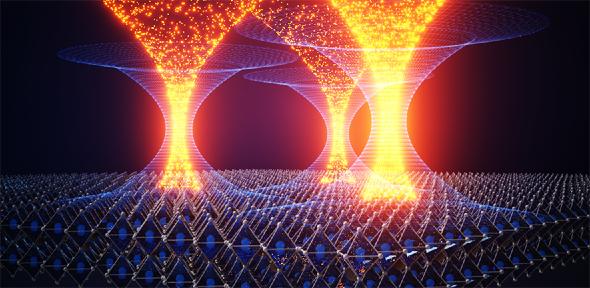
Researchers have visualised, for the first time, why perovskites – materials which could replace silicon in next-generation solar cells - are seemingly so tolerant of defects in their structure. The findings, led by researchers from the University of Cambridge, are published in the journal Nature Nanotechnology.
The most commonly used material for producing solar panels is crystalline silicon, but achieving efficient energy conversion requires an energy-intensive and time-consuming production process to create a highly ordered wafer structure. In the last decade, perovskite materials have emerged as promising alternatives to silicon.
The lead salts used to make perovskites are much more abundant and cheaper to produce than crystalline silicon, and can be prepared in liquid ink that is simply printed to produce a film of the material. They also show great potential for other applications, such as energy-efficient light-emitting diodes (LEDs) and X-ray detectors.
“We now much better understand the nanoscale landscape in these fascinating semiconductors – the good, the bad and the uglym” - Dr Sam Stranks, Department of Physics, University of Cambridge
The performance of perovskites is surprising. The typical model for an excellent semiconductor is a highly ordered structure, but the array of different chemical elements in perovskites creates a much ‘messier’ landscape. This messiness causes defects in the material that lead to tiny ‘traps’, which typically reduce performance. But despite the presence of these defects, perovskite materials still show efficiency levels comparable to their silicon alternatives.
In fact, earlier research by the same team behind the current work showed the disordered structure can actually increase the performance of perovskite optoelectronics, and their latest work seeks to explain why. Combining a series of new microscopy techniques, the group present a complete picture of the nanoscale chemical, structural and optoelectronic landscape of these materials, that reveals the complex interactions between these competing factors and ultimately, shows which comes out on top.
In collaboration with researchers from the Cavendish Laboratory, the Diamond Light Source synchrotron facility in Didcot, and the Okinawa Institute of Science and Technology in Japan, the researchers used several different microscopic techniques to look at the same regions in the perovskite film. They could then compare the results from all these methods to present the full picture of what’s happening at a nanoscale level in these materials.
The findings will allow researchers to further refine how perovskite solar cells are made in order to maximise efficiency.
Original University of Cambridge article.
Kyle Frohna et.al ‘Nanoscale chemical heterogeneity dominates the optoelectronic response of alloyed perovskite solar cells.’ Nature Nanotechnology (2021) DOI: 10.1038/s41565-021-01019-7
Image credit: "Artistic representation of electrons funneling into high quality areas of perovskite material", Credit: Alex T. at Ella Maru Studios

